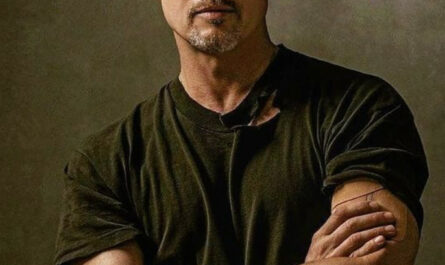As a seminal action film that continues to captivate audiences decades after its release, “Die Hard” stands as a testament to the enduring appeal of the genre. At its heart lies the iconic portrayal of John McClane by Bruce Willis, a character whose vulnerability adds a layer of depth to the adrenaline-fueled narrative. While younger viewers may have been enthralled by the explosive action sequences, as adults, we come to appreciate the nuanced performance of Willis, who imbues McClane with a sense of humanity and vulnerability rarely seen in action heroes. In this exploration, we delve into the brilliance of Willis’ portrayal, uncovering the layers of vulnerability that elevate ‘Die Hard’ beyond a mere action spectacle.
McClane’s Vulnerability:
One of the most striking aspects of Bruce Willis’ performance as John McClane is the portrayal of vulnerability. While the action hero archetype typically exudes confidence and invincibility, McClane is depicted as a flawed and vulnerable individual. Throughout the film, Willis masterfully conveys McClane’s fear, exhaustion, and desperation as he battles against overwhelming odds. From the moment he arrives at Nakatomi Plaza, bleeding and disheveled, to his emotionally charged confrontations with the terrorists, Willis captures the essence of McClane’s humanity, making him a relatable and empathetic protagonist.
McClane’s Everyman Quality:
What sets John McClane apart from other action heroes is his relatable everyman quality. As adults, we come to appreciate the depth of Willis’ portrayal, which emphasizes McClane’s ordinariness in the face of extraordinary circumstances. Unlike larger-than-life action heroes, McClane relies not only on his physical prowess but also on his wit, resourcefulness, and sheer determination to survive. Willis infuses the character with a sense of vulnerability and fallibility, highlighting his flaws and imperfections, which ultimately make him more relatable and endearing to audiences.
McClane’s Marriage Struggles:
One of the most compelling aspects of ‘Die Hard’ is the exploration of John McClane’s troubled marriage to his estranged wife, Holly. While younger viewers may overlook this subplot, as adults, we recognize the emotional depth it brings to the narrative. Willis’ performance subtly conveys McClane’s inner turmoil and longing for reconciliation with Holly, adding a layer of emotional complexity to his mission to save her from the clutches of the terrorists. The strained relationship between McClane and Holly serves as a poignant backdrop to the action-packed events unfolding at Nakatomi Plaza, underscoring the high stakes of McClane’s mission and the depth of his character.
Die Hard as a Satire:
Beyond its pulse-pounding action sequences, ‘Die Hard’ cleverly subverts some of the tropes of the action genre, offering a satirical commentary on masculinity, heroism, and capitalism. Willis’ portrayal of McClane is imbued with a sardonic wit and self-awareness that adds a layer of humor to the film. His sarcastic one-liners and witty retorts serve as a sharp contrast to the over-the-top villainy of Hans Gruber and his cohorts, highlighting the absurdity of the situations in which McClane finds himself. As adults, we appreciate the subtle satire woven throughout the film, which adds depth and dimension to the action-packed narrative.
The Christmas Connection:
One of the most enduring aspects of ‘Die Hard’ is its unique setting against the backdrop of a Christmas party. While younger viewers may view this as a mere coincidence, as adults, we recognize the deliberate choice to juxtapose holiday cheer with violent chaos. Willis’ portrayal of McClane navigating through a festively adorned Nakatomi Plaza, using Christmas decorations as improvised weapons, adds a darkly humorous element to the film. The juxtaposition of holiday festivities with explosive action serves as a poignant commentary on the commercialization of Christmas and the fragility of peace and goodwill.
Conclusion:
In ‘Die Hard,’ Bruce Willis delivers a performance that transcends the confines of the action genre, infusing John McClane with a sense of vulnerability and humanity rarely seen in cinematic heroes. As adults, we come to appreciate the depth and complexity of Willis’ portrayal, which adds layers of nuance to the adrenaline-fueled narrative. Through his masterful performance, Willis elevates ‘Die Hard’ beyond a mere action spectacle, transforming it into a timeless classic that continues to resonate with audiences of all ages. In the end, it is Willis’ vulnerability as John McClane that makes ‘Die Hard’ a truly unforgettable cinematic experience.



